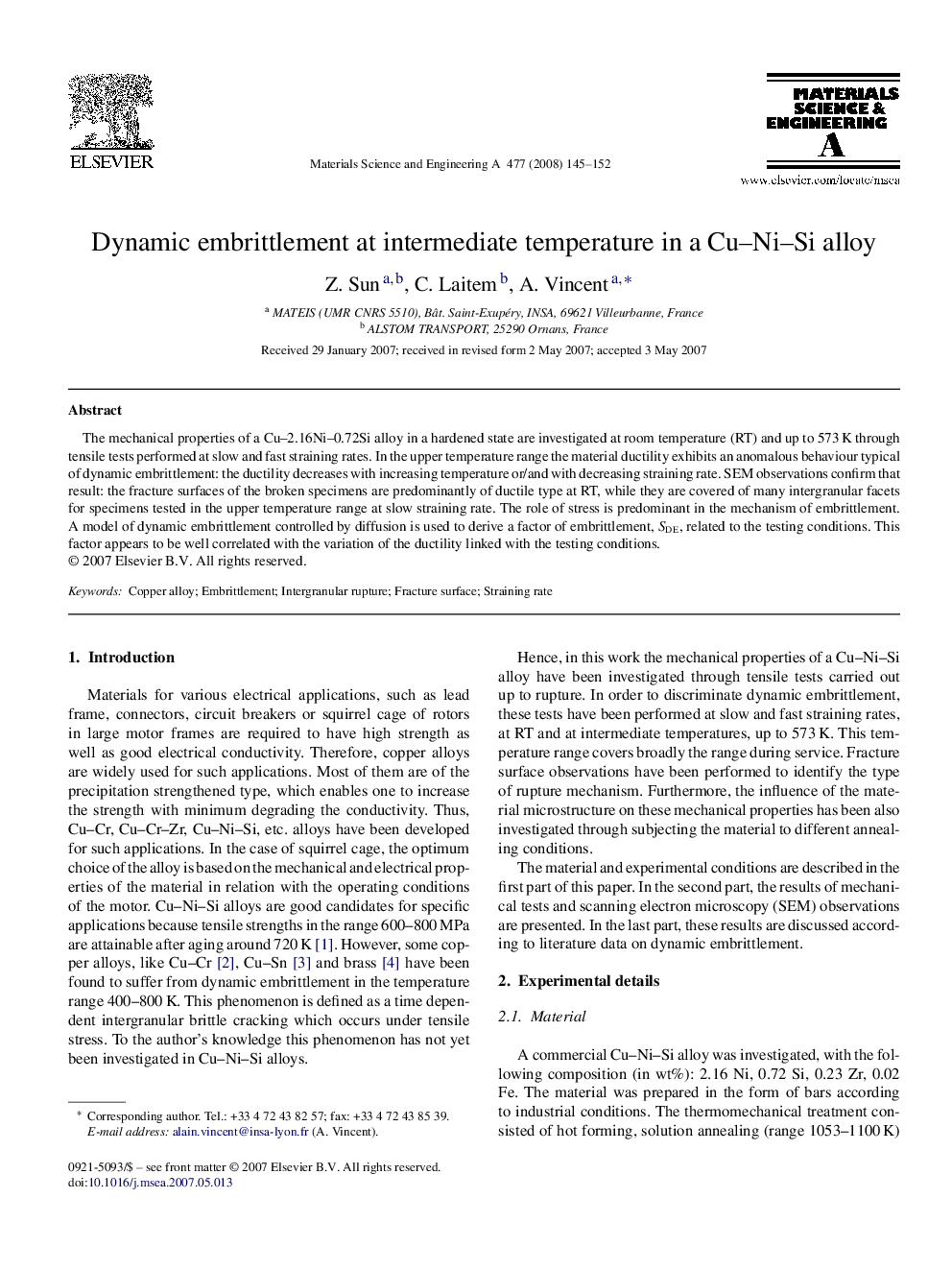| Article ID | Journal | Published Year | Pages | File Type |
|---|---|---|---|---|
| 1582886 | Materials Science and Engineering: A | 2008 | 8 Pages |
The mechanical properties of a Cu–2.16Ni–0.72Si alloy in a hardened state are investigated at room temperature (RT) and up to 573 K through tensile tests performed at slow and fast straining rates. In the upper temperature range the material ductility exhibits an anomalous behaviour typical of dynamic embrittlement: the ductility decreases with increasing temperature or/and with decreasing straining rate. SEM observations confirm that result: the fracture surfaces of the broken specimens are predominantly of ductile type at RT, while they are covered of many intergranular facets for specimens tested in the upper temperature range at slow straining rate. The role of stress is predominant in the mechanism of embrittlement. A model of dynamic embrittlement controlled by diffusion is used to derive a factor of embrittlement, SDE, related to the testing conditions. This factor appears to be well correlated with the variation of the ductility linked with the testing conditions.
